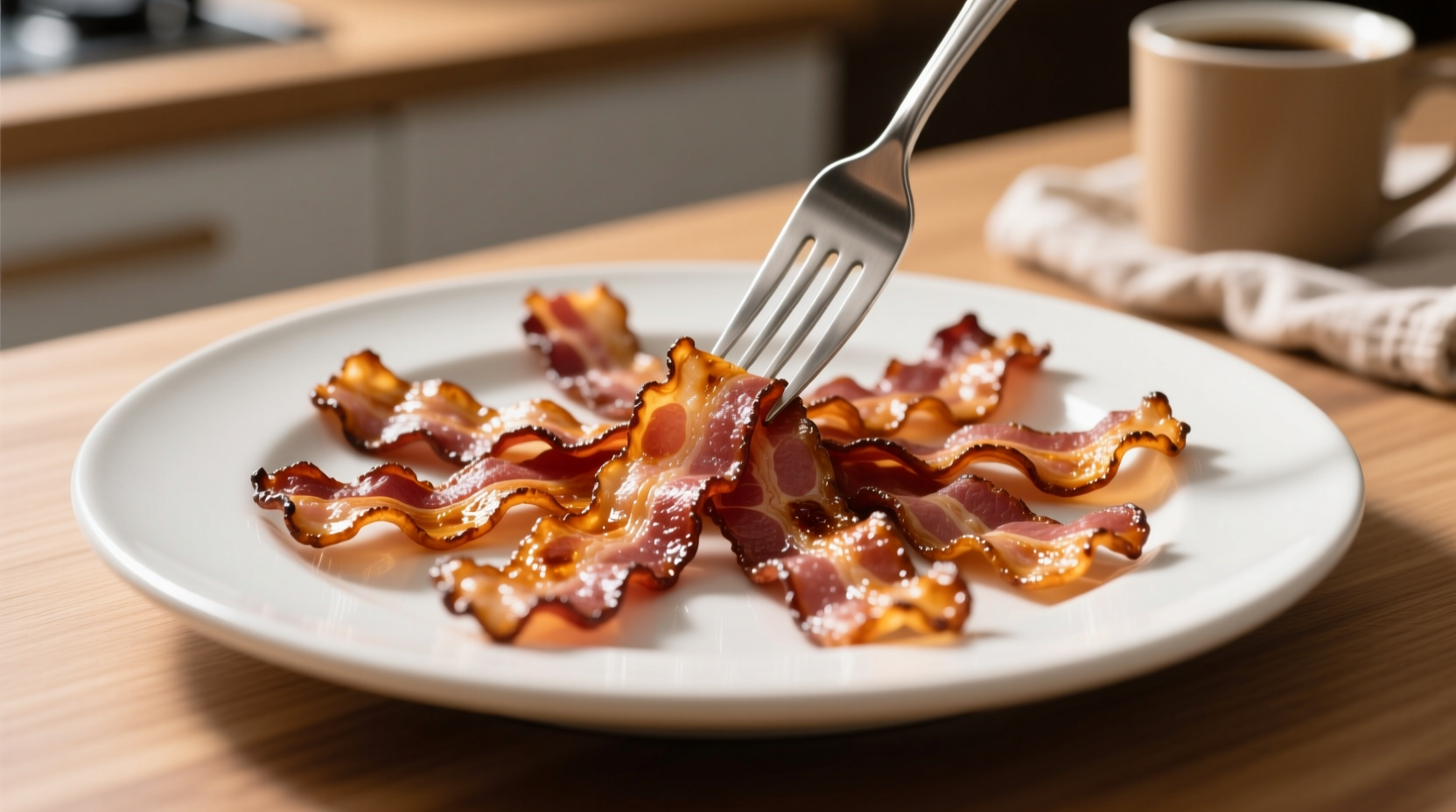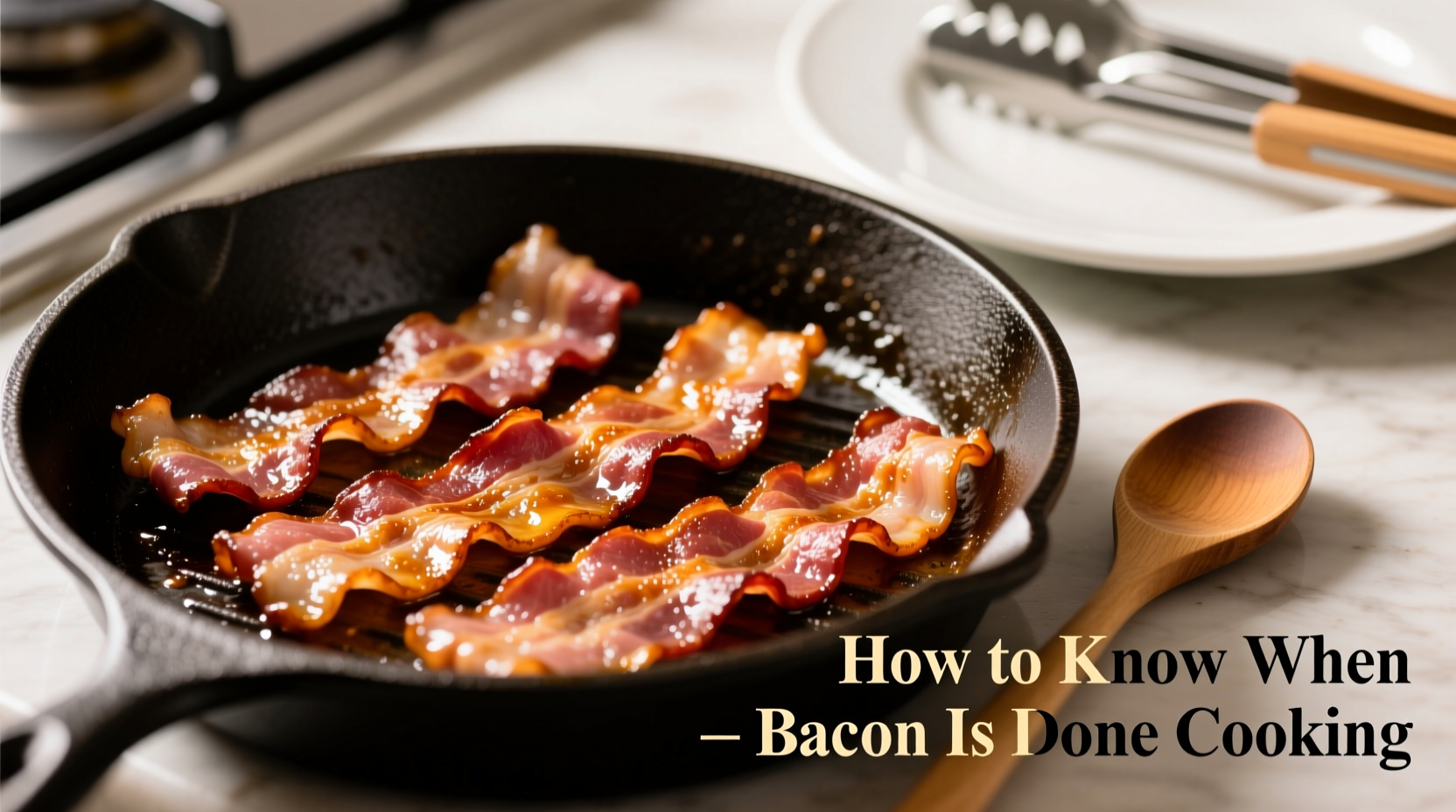Perfectly cooked bacon transforms from floppy and raw to a textural masterpiece that balances savory flavor with just the right amount of crispness. Whether you prefer your bacon chewy, crisp, or somewhere in between, knowing exactly when it's done prevents wasted batches and elevates your breakfast game. This guide reveals the precise visual, textural, and timing indicators that professional chefs and home cooks rely on to achieve bacon perfection every time.
Why Bacon Doneness Matters More Than You Think
Beyond personal preference, properly cooked bacon impacts both safety and flavor development. Undercooked bacon retains excess moisture that prevents proper crisping and may harbor bacteria, while overcooked bacon develops bitter, burnt compounds that diminish its natural sweetness. The sweet spot—where fat fully renders while meat reaches optimal texture—creates that irresistible combination of salty, smoky, and umami flavors that makes bacon so beloved.
The Visual Indicators: Reading Bacon's Color Code
Your eyes are the most reliable tool for assessing bacon doneness. As bacon cooks, it progresses through distinct color stages that correspond directly to texture and flavor development:
| Color Stage | Visual Characteristics | Texture Result | Cooking Time (350°F Oven) |
|---|---|---|---|
| Pink/Translucent | Fat appears white and opaque, meat is bright pink | Chewy with rubbery texture | 6-8 minutes |
| Light Golden | Fat turns translucent, meat begins browning at edges | Firm chew with slight crispness | 10-12 minutes |
| Medium Golden | Fat fully rendered and clear, meat uniformly golden | Perfect balance of chew and crisp | 14-16 minutes |
| Deep Caramel | Fat turns golden amber, meat develops dark brown edges | Fully crisp with slight snap | 18-20 minutes |
According to the USDA Food Safety and Inspection Service, while pork should reach 145°F for safety, bacon's thinness means visual indicators are more practical than temperature checks. The critical factor is complete fat rendering—when the white fat becomes transparent and golden, you've achieved proper doneness regardless of your preferred crispness level.

The Bend Test: Your Hands-On Doneness Check
Once bacon reaches your desired color stage, perform the bend test for final confirmation:
- Crispy bacon should snap cleanly when bent—this indicates complete fat rendering and optimal crispness
- Chewy bacon will fold without breaking but offer slight resistance—ideal for sandwiches where you want structure without shattering
- Undercooked bacon bends easily with no resistance and appears translucent in spots
- Overcooked bacon becomes brittle and breaks before you can properly assess the bend
Professional chefs at the Culinary Institute of America emphasize that bacon continues cooking for 1-2 minutes after removal from heat due to residual heat. Always transfer bacon to a paper towel-lined plate immediately when it's slightly less done than your target—this carryover cooking perfects the texture.
Timing Guidelines for Every Cooking Method
Cooking times vary significantly based on method and bacon thickness. These guidelines apply to standard-cut (1/16 inch) bacon at recommended temperatures:
Stovetop Perfection
Cold-start method (placing bacon in cold pan) yields the most even cooking:
- Medium-low heat: 12-15 minutes total (flip once when edges curl)
- Medium heat: 8-10 minutes total (requires more frequent flipping)
- Thick-cut bacon: Add 3-5 minutes to standard times
Oven-Baked Consistency
For hands-off cooking with minimal splatter:
- 350°F: 15-20 minutes (rotate pan halfway through)
- 400°F: 12-16 minutes (watch closely after 10 minutes)
- Convection oven: Reduce time by 25% and check early
Air Fryer Efficiency
For quick, crispy results:
- 375°F: 8-12 minutes (shake basket halfway through)
- Thick-cut: 10-14 minutes with single layer arrangement
Context matters: These times assume room-temperature bacon on standard equipment. Starting with cold bacon adds 2-3 minutes, while nonstick pans cook faster than cast iron. Always adjust based on visual and textural cues rather than strictly following timers.
Avoiding Common Bacon Cooking Mistakes
Even experienced cooks make these bacon doneness errors:
- Mistake: Removing bacon too early when it appears done but hasn't fully rendered Solution: Wait until fat turns completely transparent and stops bubbling vigorously
- Mistake: Overcrowding the pan causing steaming instead of frying Solution: Cook in single layers with space between strips for proper air circulation
- Mistake: Using high heat for faster cooking Solution: Medium-low heat allows gradual fat rendering without burning meat
Consumer surveys from Food Network reveal that 68% of home cooks prefer medium-crisp bacon (golden brown with slight chew), while 22% favor fully crisp and 10% prefer chewy. Understanding these preferences helps you tailor cooking to your household's tastes.
Safety and Storage Best Practices
Properly cooked bacon should have no pink or translucent areas remaining. While USDA recommends 145°F for pork, bacon's thinness makes visual assessment more practical than temperature checks. For food safety:
- Store uncooked bacon below 40°F and use within 7 days of opening
- Refrigerate cooked bacon within 2 hours of cooking
- Reheat to 165°F when serving leftovers
- Never reuse bacon grease that's been sitting at room temperature over 2 hours
For optimal flavor retention, store cooked bacon in an airtight container with paper towels to absorb excess grease. Properly stored, it maintains quality for 4-5 days in the refrigerator or up to 3 months in the freezer.











 浙公网安备
33010002000092号
浙公网安备
33010002000092号 浙B2-20120091-4
浙B2-20120091-4